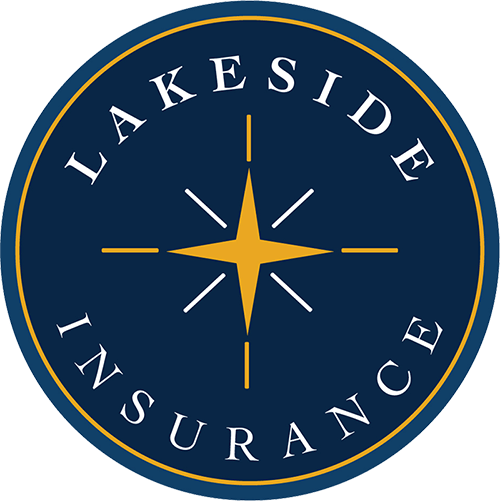
Many home insurance policies provide partial coverage for watercraft, but it’s likely that you will need specific boat insurance coverage to be fully protected if you own a recreational boat. Most homeowners policies provide maximum payouts of just $1,000, or 10% of your home’s insured value, for watercraft. And they don’t include liability coverage, which provides financial protection should your boat cause damage to another person or their property.
If you have a canoe, kayak or other similar small boat, your insurance professional can confirm if your homeowners policy is sufficient for your risk and type of use. However, recreational boats – those under 27 feet, the delineating point between a pleasure boat and a yacht – will probably require additional coverage, particularly if it travels at speeds greater than 25 mph. Note that both yachts and personal watercraft (commonly known by brand names such as Jet Ski, Sea-Doo or WaveRunner) require different insurance than recreational boats.
Smart Coverage
The typical boat insurance policy provides liability protection for bodily injury and required medical expenses, property damage to others, and any injuries or losses caused by people you give permission to drive your boat. It also insures against damage or losses due to collisions, fires, lightning, vandalism and theft. This includes the boat – the hull, machinery, fittings and furnishings – as well as any permanently attached standard equipment.
What’s not included is:
- Normal wear and tear
- Defective machinery or failure due to lack of maintenance
- Damage from wildlife, including sharks, insects and zebra mussels
- Damage from mold
- Damage from ice or freezing
Depending on your particular situation, you may also want to add coverage for trailers, expensive accessories, towing, uninsured boaters or carry-on equipment such as fishing gear.
Policy Particulars
Every policy has important details you need to understand. Ask your insurance professional about these specific limits or coverage features:
- Navigational limits: Are you limited to specific territory or waterways? What should you do if you want to take your boat outside these areas? Boats used on freshwater, inland lakes are typically less expensive to insure than those used on the ocean.
- Marine inspections: Is there a certain model year for which a marine survey is required? Even if your boat is not an older model, you might still want a survey to confirm value.
- Underage operators: What are the age and license requirements for the waterways you will be using? Does coverage extend to children under that age?
- Equipment: As mentioned, most policies include fittings, furnishings and permanently attached equipment.
However, you should verify this list against your expectations. Check on the coverage related to anchors, oars, trolling motors, tools, seat cushions, life jackets and expensive items onboard. In addition, you must select which type of policy you want with regard to claim expectations. There are two types of boat insurance policies: actual cash value policies and agreed amount policies. To better understand these two options, here are the general definitions:
- Actual cash value (ACV): Claims are paid based on replacement cost, minus depreciation. If your boat is a total loss, your payment will be determined based on used boat pricing guides or other resources. Partial losses are paid based on the cost of the repair, minus a percentage for depreciation.
- Agreed amount (also called “stated value”): Claims are paid based on a valuation both you and your insurance company agree to at the time the policy starts. Total losses are paid out at this value. Partial losses are settled without any deduction for depreciation.
To determine the right policy for you, compare the cost of premiums and the levels of risk you feel comfortable assuming. If you prefer the protection afforded by an agreed amount policy but find the premiums a bit stiff for your budget, you can reduce the premium further by adjusting the deductible you are willing to pay.
Savings Discovered
There are other ways to reduce your premiums, too. Ask your insurance professional about potential discounts for having:
- A diesel fuel engine, which is considered less hazardous than a gasoline-powered engine
- Coast Guard-approved fire extinguishers
- Ship-to-shore radios
- Completed safety courses
- Multiple policies with the same insurer, including home, auto or umbrella
- Two or more years without a claim
- A good driving record
Be sure to review this discount list every time your policy renews.
Don’t Get Caught High And Dry
It may be tempting to suspend your boat policy when your watercraft is in storage or out of the water. However, your boat can still suffer damage year-round due to fire, vandalism, theft or even winter storms.
While you don’t want to end coverage, you can consider what’s called a “lay-up” policy during the off-season or periods of inactivity, which reduces your coverage without eliminating it entirely. This type of coverage maintains protection for risks that still exist during storage or time out of the water, but it temporarily suspends coverage for on-water risks, such as collisions, wreck removal or uninsured boaters.
If you have a lay-up policy, you must adhere to the proposed calendar guidelines. If you take your boat out even a day before the lay-up policy stipulates, you will not be covered for any losses. Contact your insurance professional for help with the particulars of watercraft coverage and any discounts available to you.




